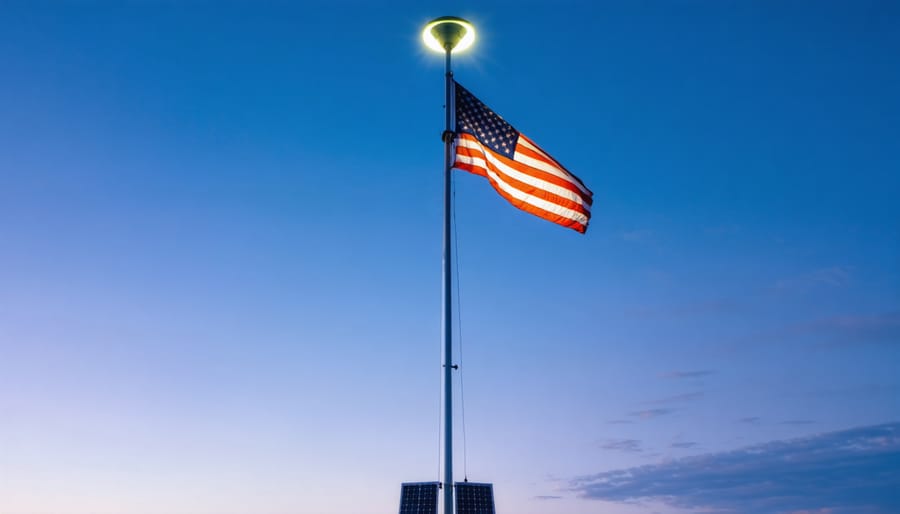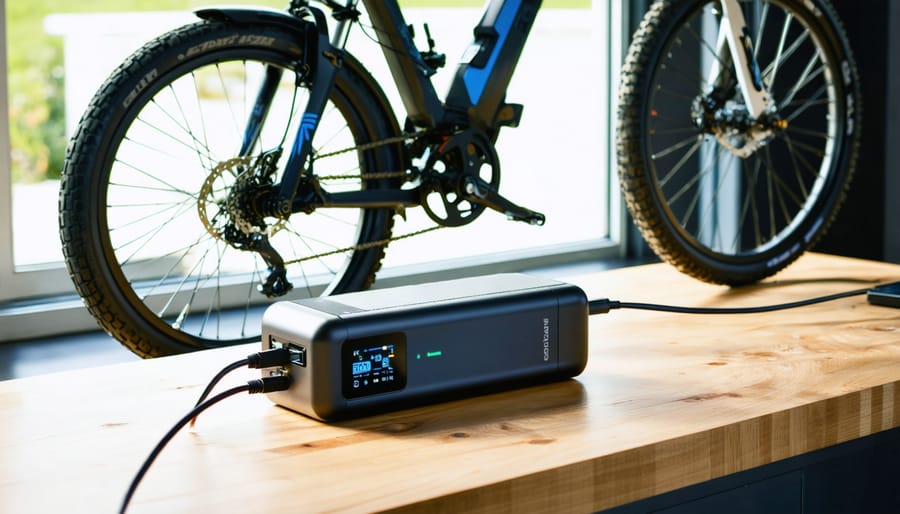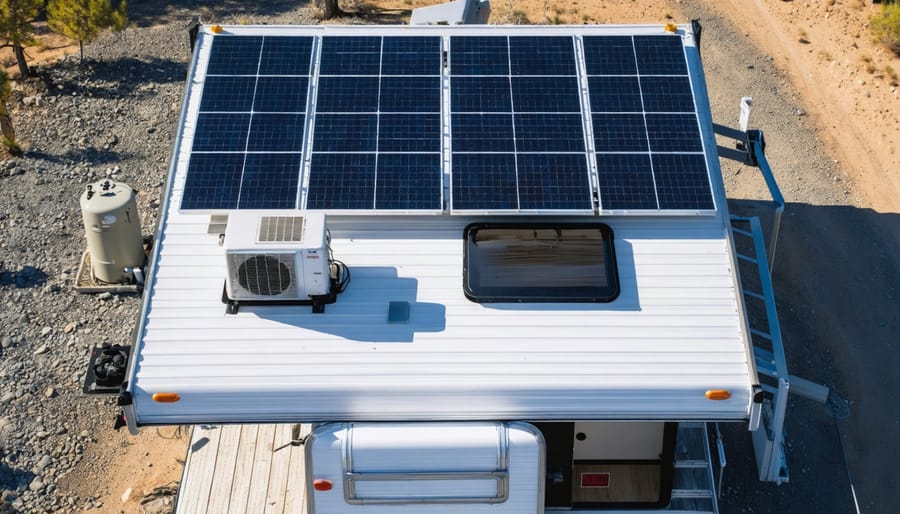What Car Battery Voltage Is Too Low
Updated:

The optimal voltage range for most car batteries used in RVs and motor homes is 12.4-12.7 volts. Yet, these vehicles often face challenges maintaining this voltage and preventing low voltage in the car battery, especially when parked for extended periods.
Using trickle chargers and solar charge maintainers is essential for RVs and motorhomes that sit unused for long periods to prevent low voltage.
This article explores what’s considered a low voltage, solutions for maintaining voltage, and best practices for battery care in RVs and motorhomes.
What Is Considered a Low Voltage for RV/Motorhome Batteries
Most car batteries in RVs and motorhomes operate best when fully charged between 12.4-12.7 volts. This is the optimal voltage range you want to maintain for peak battery life and performance.
However, your battery voltage can drop below this level for several reasons:
- Infrequent use of your RV or motorhome leading to self-discharge of the battery over time
- A defective alternator that is not correctly recharging your battery while driving
- Short trips in your RV that do not allow the alternator enough time to recharge the battery fully
- Running electronics like lights or appliances in your RV that drain the battery when the vehicle is off
If your battery voltage drops to 12.2-12.4 volts, your battery likely has between a 40-75% state of charge. Though it may still start your engine at this point, this is a warning sign that you need to recharge soon.
You should be especially concerned if your battery voltage falls below 12.0 volts. This indicates a low battery voltage or flat battery that is in danger of failing to start your engine and needs immediate recharging.
Some common causes of voltages below 12.0 volts:
- An old car battery that can no longer hold a full charge
- Electrical components like appliances or lights drain your battery overnight
- Only take short trips in your RV that do not give the alternator enough recharging time.
Using a battery voltage chart, you can easily monitor voltage levels and tell if your RV or motorhome battery needs recharging. Voltage consistently below 12.4 volts puts your battery at risk of failing.
Regularly checking voltage lets you catch a low battery before it leaves you stranded on the road.
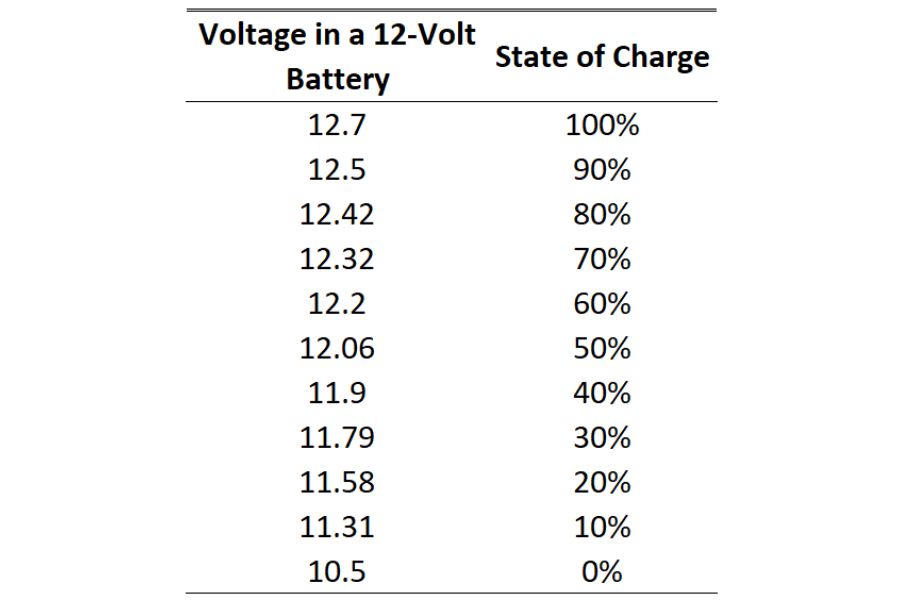
Effects of Low Battery Voltage
Low car battery voltage is more than just a light on the dashboard. It’s a clear warning sign that something is wrong with your RV or motor home’s battery, which could have serious consequences.
Here’s what happens when the battery voltage drops:
- Alternator Damage: As the voltage drops to very low levels, the car’s alternator strains to charge the battery, harming the charging system.
- Fuel Pump Issues: Low voltage slows the fuel pump, affecting vehicle performance.
- Sensor Damage: Hardware components like sensors can suffer, causing more significant issues.
- Sulfation Process: Low voltage triggers sulfation, reducing battery life.
- Charging Difficulties: Old batteries with low voltage may not recharge fully, even with a battery charger.
- Terminal Issues: Connections at battery terminals may be affected, disrupting the charging system.
- Extended Recharging Time: A severely depleted battery may need 2-3 days to recharge, affecting travel plans.
Solutions for Low Car Battery Voltage: Trickle Chargers and Charge Maintainers
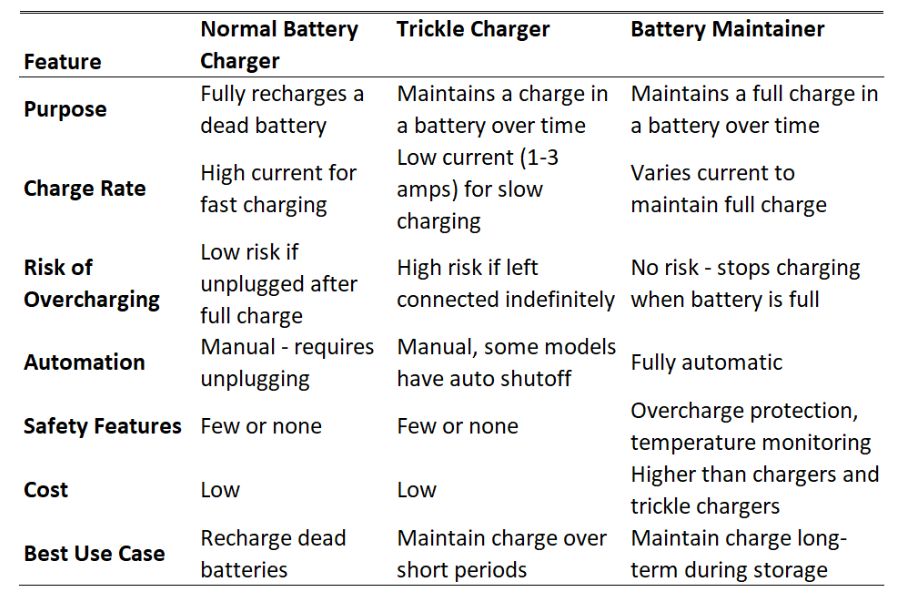
Low battery voltage in RVs and motor homes can be effectively managed with the help of trickle chargers and charge maintainers.
While traditional trickle chargers have been a reliable solution, solar-powered options have emerged as versatile and eco-friendly approaches.
Solar Trickle Chargers and Solar Charger Maintainers
Solar-powered chargers offer unique benefits, especially for RVs and motor homes that may be away from regular power sources.
Here’s an in-depth look at these innovative solutions:
Solar Trickle Chargers
These devices use solar energy to provide a slow, steady charge to the battery. They help maintain the battery’s charge level, preventing it from dropping too low.
Solar trickle chargers keep batteries topped up when the vehicle is unused.
Solar Charger Maintainers
Like solar trickle chargers, solar charger maintainers have more advanced control systems. They maintain the charge and prevent overcharging by carefully regulating the charging process.
This regulation helps extend the battery’s life and keeps the charging system safe.
Benefits and Importance
Some key benefits of these solar chargers include:
- Continuous Power Supply: They provide power without relying on an electrical source.
- Eco-Friendly: Utilizing solar energy reduces environmental impact.
- Ideal for Long Trips: Perfect for extended travel in remote locations.
Charging and Recharging Practices
Managing the battery life in an RV or motor home requires understanding the recharging process.
By inputting the battery’s capacity (in milliampere-hours or watt-hours) and the power consumption of the load (in watts), this battery capacity calculator estimates how long the battery can supply power before needing to be recharged or replaced.
Knowing how and when to recharge is vital to prevent low voltage and voltage drops. Here’s what you need to know:
Recharging a Battery That’s Not Fully Dead
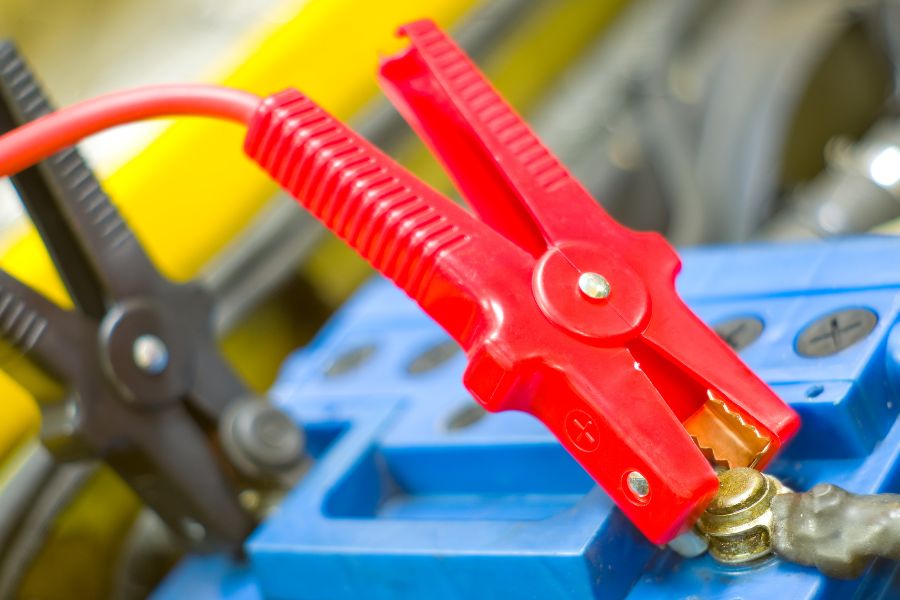
If the battery isn’t fully dead, recharging it is a straightforward task. Here are the steps to follow:
- Monitor Voltage: Keep an eye on the battery voltage. If it’s below 12.65 volts but above 11.75 volts, it’s time to recharge.
- Use a Trickle Charger or Charger Maintainer: These devices provide a slow and steady charge, perfect for batteries that aren’t fully drained.
- Follow Manufacturer Guidelines: Each battery and charger may have specific instructions. Following them helps maintain battery life.
Can a Solar Trickle Charger Fully Charge a Dead Battery?
Solar trickle chargers are not designed to fully recharge a completely dead or flat battery from scratch. Here’s why:
- Low Power Output: Trickle chargers only provide a few watts of power, far below what’s needed to recharge a dead battery.
- Slow Charging: It could take weeks for a trickle charger to fully charge a dead battery due to the low power output.
- Battery Damage: A completely dead battery may have internal damage that prevents it from accepting a full charge again.
While useful for maintenance charging, solar trickle chargers cannot bring a dead battery back to life. A standard charger with a higher amperage is better if your battery is completely flat.
When to Replace the Battery
In the life of an RV or motor home, there comes a time when the battery needs to be replaced. Recognizing a dead battery and knowing how to select and replace it is vital for the continued smooth operation of the vehicle.
How to Recognize a Dead Battery
A dead battery can leave you stranded, so spotting the signs early is crucial. Here’s what to look for:
- Constant Voltage Drop: If the voltage consistently falls below 11.75 volts, it’s a sign the battery life is at its end.
- Failure to Recharge: An old battery that doesn’t recharge properly is likely dead.
- Slow Cranking Engine: If the engine turns over slowly or not at all, it might be due to a dead battery.
- Check with a Professional: Sometimes, a professional assessment is the best way to confirm whether the battery is dead.
Tips for Selecting and Replacing the Battery
Choosing the right battery for your RV or motor home and replacing it properly requires careful consideration:
- Match the Specifications: Select a battery that matches the vehicle’s requirements, including size, power output, and type.
- Consider the Charging System: Consider how the battery will interact with the charging system, especially if you use solar trickle chargers or charge maintainers.
- Quality Matters: Invest in a reputable brand known for quality and longevity.
- Follow Installation Guidelines: Replacing a battery involves handling electrical components. Follow the guidelines or consult a professional to avoid mishaps.
- Recycle the Old Battery: Don’t just toss the old battery in the trash. Take it to a recycling center that handles batteries.
Considerations for RVs and Motor Homes
Specific considerations tailored to these unique vehicles are essential when selecting and replacing a battery in an RV or motor home. Here’s what to keep in mind:
- Travel Needs: Consider your travel patterns. If you frequently embark on long trips, opt for a battery known for reliability and long battery life.
- Living Accommodations: If the RV or motor home is your residence, choose a battery that can support daily living needs without frequent voltage drops.
- Solar Compatibility: If you use solar trickle chargers, ensure the new battery is compatible with the solar charging system.








